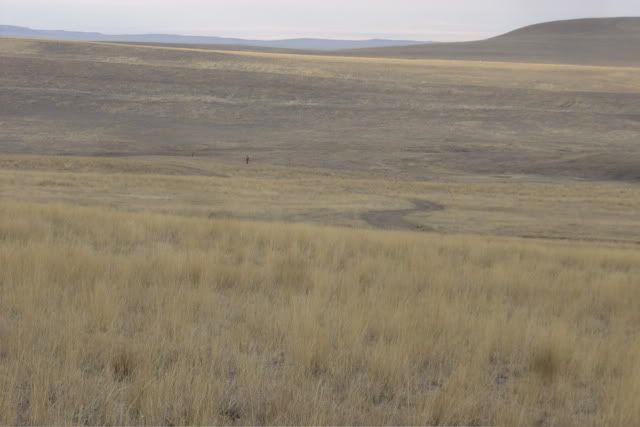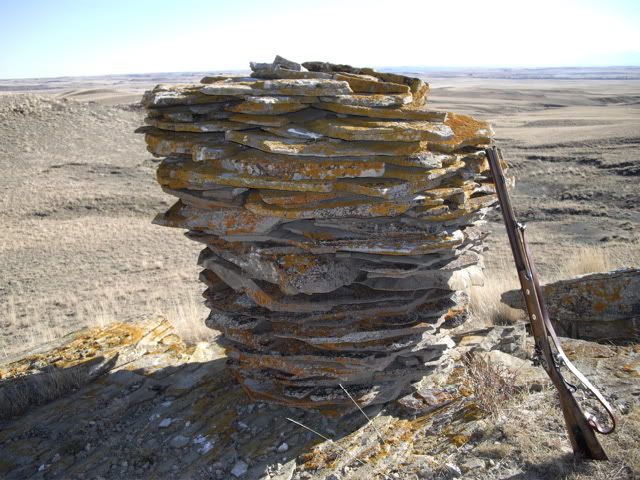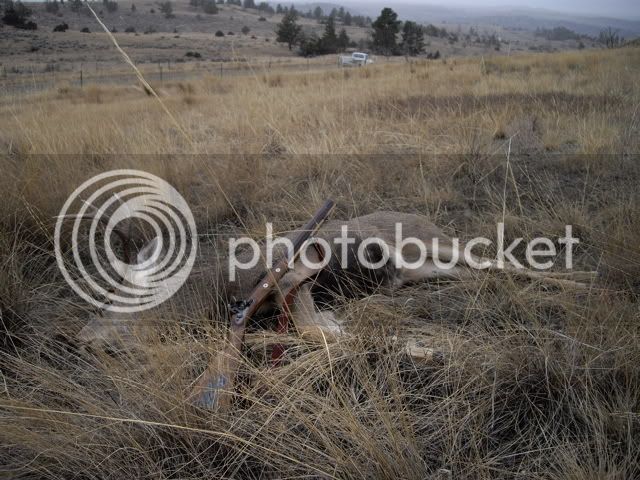Where and what the game is will determine many things.Snow on the Roof said:I respect Dan's opinion a lot. For those "Uber" deer they have in Wyoming and Montana coupled with the ranges one typically finds out west I would heed Mr Phariss'advice, 90 grains +. Here in the midwest of the 40 or so deer I've killed in the last 30 years only four where taken past 50 yards. Sixty grains combined with a .490 RB is more than adequete at our abreviated ranges. Thirty or more years ago I thought these midwestern whitetails required 110 grains or more but a few dead deer and a lot of gray hairs lead me to believe that today's deer just are'nt as tough as their ancestors :haha: !
Snow
A 45 caliber RB rifle with 45 grains of powder will kill deer at 40-50 yards.
Ran 70 yards or so. But I have seen them run farther with similar shots from a lot more gun, modern or otherwise.
Ball did not exit.
The primary reason for heavier powder charges is flatter trajectory. If you need more killing power the best way to get it is with a larger ball size. The 50-54 caliber rifle is an excellent compromise. Good killing power, low lead/powder consumption. In the east 45-50 will serve the same purpose.
Out here I shoot quite a few deer at 50 yards or even less. But one cannot count on it and should be prepared for shots at the far side of 100.
I have killed several in the 140-150 yard range over the years.
I have killed even Antelope at very close range 20 yards or so. But it requires:
1. Luck of circumstance, I have had them come to me not knowing I was there, same with deer.
2 "Friendly" terrain.
In the east things are far different. There are places out here that I hunt that I don't even go there is a ML. The country is just too "big".

I killed an antelope about 1/2 mile from here this day. But not with a ML.
From this ancient monument one can see to the horizon in nearly a 180 degree arc.

About 1000 yards NE is a good camping spot.
One can set here, unseen at the monument and keep and eye on a lot or country.
I walked about 3 miles round trip to look at this thing. Not really deer country but during hunting season one never knows where some will be.
This was a 90 yard shot.

Held center of shoulder with a slight lead, deer was moving. Ball hit center of shoulder.
If the rifle is sighted too close or the velocity is too low this becomes a problem with where to hold.
So I follow James Forsythe's advice and sight my rifle for a range that will allow me to hold center for as far as I should be shooting with RB gun and all worries about hold over/under go away.
The animal is either in range or its not. If not get closer. If in range put the frontsight where you want the ball and break the trigger.
If one hunts in the east perhaps from a tree stand then this is far less important. In this case a larger ball is more important than trajectory. The larger ball will reduce the animals ability to run onto the wrong side of the fence for example.
The low sights on original rifles were designed to keep the ball very close to the line of sight to 100-130 yards. So no matter what you shot at you simply held where you wanted the ball to hit.
The rifle matches were shot under rules that allowed the barrel to cool between shots so mirage on the barrel was not a factor in most cases.
High sights, low sights.
The AR 15 is designed to give about a 400 yard point blank on an enemy soldier. The high sight line help it do this and to lower the bore centerline for less muzzle rise. But a human target is deep vertically and being off 5" vertically is not important. 5" on a deer is a problem and ARs shoot low at close range. Low enough to make it necessary to hold high to hit a rabbit. The low sighted Kentucky does not have this problem but will require 4 feet or more hold over at 300.
But to 150 a center hold would kill a man standing in a rank with his Brown Bess easily.
So when we start thinking sights and trajectories we need to understand that the RB given its 45 or to 69 caliber, has a point blank for deer of about 110-130 yards with all the powder one might care too shoot. Understanding this makes the hunters shooting easier. The 25 and 50 yard target shooter may need a different sight in point.
I am supposed to be on my morning walk.
Dan





